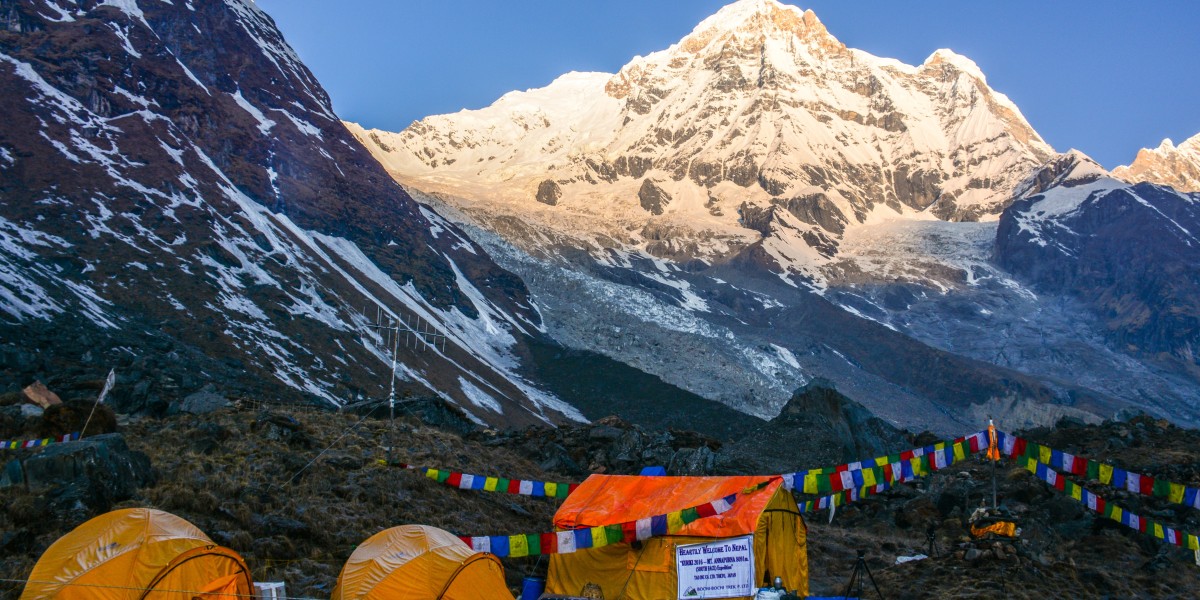Overview
Annapurna Base Camp Trek is in Nepal and is known for its stunning Himalayan views, beautiful scenery, and rich culture. Lost amidst beautiful snowy peaks and cherishing every moment with the nature. The north-west of Nepal offers a breathtaking view over the tenth highest Mt. Annapurna 1 along with the numerous majestic peaks in its surroundings. The name of Annapurna mountain is derived from the Hindu mythology called “Ma Annapurna” which means full of grains or provider of food.
If you love these kind of treks than have a look on Chadar Trek.
If you are intend to embark on this adventure, here is comprehensive guide to help you plan your trip.
Best time to visit
The Best time to go for Annapurna camp trek is from September to November or March to May. During these months, the weather is dry, and the sky is clear, offering the best views of the Himalayas. From December to February is the coldest season, and the trails can be slippery due to snow, while June to August is monsoon season, and trekking can be difficult due to rain and landslides.
Trekking Permits
Prior to starting the trek, you will need two permits- Annapurna Conservative Area Permits (ACAP) and Trekkers Information Management System (TIMS) card. ACAP costs approximately 3000NPR (about 25 USD) per person, while the TIMS card costs 2000 NPR (about 17 USD) per person. You can get those permits at Kathmandu or Pokhara.
Trekking Routes
The Annapurna Base Camp Trek can be completed within 7 to 12 days, according to your pace and route. The most popular route is that which departs from Nayapul and passes by Tikhedhunga, Ghorepani, Tadapani, Chhomrong, Dovan, Deurali, and finally Annapurna Base Camp. You can also choose to start from Ghandruk, which is a day’s trek from Nayapul and is a popular starting point for those who want to skip the first leg of the trek.
Things To Do
Hiking and Exploration: The principal activity of a trek is hiking and exploring the trail.
Photography: A trek is an occasion to take beautiful pictures of the surrounding landscapes, wildlife, and residents.
Camping: For those who prefer a more adventurous experience, camping is a popular option that lets you set up camp in remote and picturesque places.
Wildlife Watching: Depending on the locations, trekkers can spot rare mountain gorillas, snow leopards, and exotic birds.
Cultural interaction: Trekking often brings you across rural and distant communities, offering opportunities for interaction.
Spiritual experiences: For some, a trek can be a spiritual journey, providing a connection with nature, and opportunities for medication.
Accommodation
There are plenty of guesthouses and lodges along the trekking route, offering basic accommodation and food. The cost of accommodation and food varies with altitude and seasonality. During the peak season expect to pay around USD 20-30 per night for a twin room, while during off-peak season, you can get a room for as low as USD 5-10 per night.
Altitude Sickness
Altitude Sickness is a common issue that trekkers face when heading to Annapurna Base Camp. The best way to prevent altitude sickness is to acclimatize properly, drink a lots of water, and walk slowly. If you feel symptoms like headache, nausea, and dizziness, immediately go down to a lower altitude.
What To Pack
Pack your bags wisely for the trek, because you will carry your backpack all along your trip. A good quality of backpack, warm clothes, trekking shoes with good ankle support, trekking poles, sleeping bag, headlamp with extra batteries, water bottle, hat, sunglasses, sunscreen, a basic first-aid kit, wet wipes, and snacks such as energy bars, chocolates, and nuts.
Food and Water
Most guesthouses along the trekking route offer a variety of Nepalese and Western cuisine. You can find dishes like dal bhat (rice, lenticels and vegetables), noodles and fried rice. It is recommended that you drink bottled water, which you can buy in the guesthouse. You can carry water purification tablets or water filters.
Money
It is advisable to carry Nepalese currency (NPR) in small denominations.
Is a solo trip possible?
Solo trekking or women’s single trekking in the Annapurna Base Camp is possible but not recommended. Annapurna region is easy to navigate but there are occasional side paths set up by locals. The higher you go, the less the villages become, it is, therefore safer to trek in a group. Travel only solo when you are conscious of all the future consequences and trekking itineraries.
In conclusion, the Annapurna Base Camp Trek is a challenging but rewarding adventure with a breathtaking view of the Himalayas and a chance to experience the local culture of Nepal. With proper planning, preparation, and precautions, you can make your trekking trip safe and enjoyable. Enjoy the journey, stay safe, and make memorable memories on this incredible trek.








